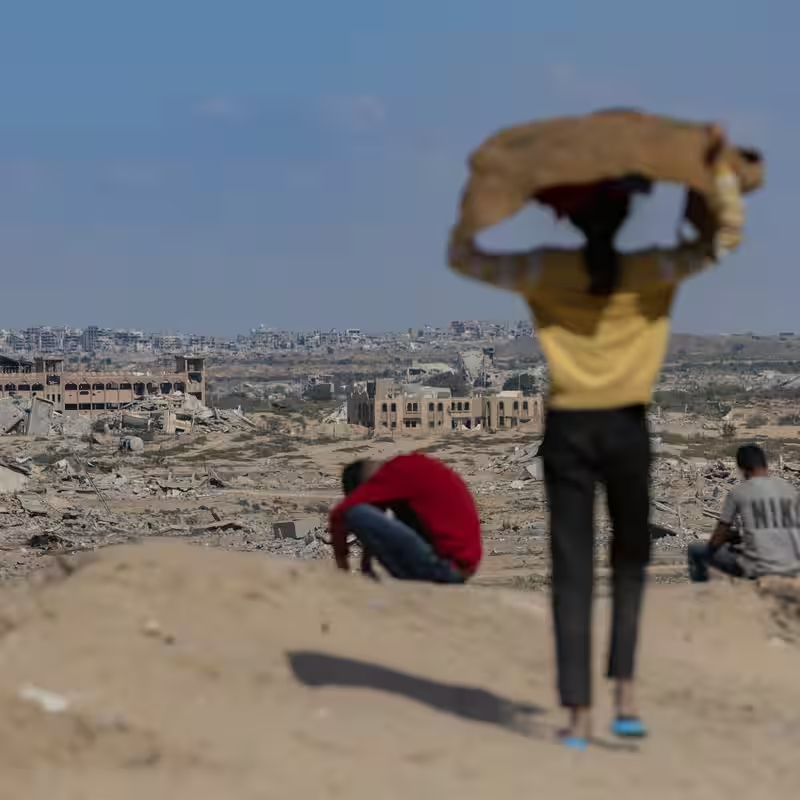After more than two years of brutal warfare and months of stalled negotiations, a sudden breakthrough has emerged in the Israel-Hamas conflict. The ceasefire deal announced on October 9, 2025, stunned diplomats and civilians alike—but how did talks that seemed permanently stuck suddenly yield a concrete agreement? The answer lies in a mix of high-stakes diplomacy, regional pressure, and a controversial U.S. peace plan that finally forced both sides to blink.
The Gaza Ceasefire Deal: What Changed?
For months, ceasefire talks between Israel and Hamas had hit a wall. Core issues—like Hamas’s future role in Gaza, Israeli troop withdrawal, and the fate of remaining hostages—remained unresolved. But everything shifted in early September 2025 after a dramatic Israeli airstrike on a residential area in Doha, Qatar, where Hamas negotiators were meeting .
The strike, which didn’t kill the negotiators but deeply angered Qatar—a key U.S. ally and mediator—backfired on Israel. President Trump, furious at the move, reportedly told aides it “undermined America’s credibility” and began pressuring Israeli Prime Minister Benjamin Netanyahu to accept a structured peace framework.
Trump’s 20-Point Peace Plan: The Catalyst
On September 29, 2025, President Trump unveiled a sweeping 20-point peace proposal at the White House with Netanyahu at his side. The plan demanded:
- Immediate release of all remaining Israeli hostages (living and deceased)
- Israeli pullback to agreed-upon deployment lines in Gaza
- Entry of large-scale humanitarian aid into Gaza
- Hamas’s disarmament and exclusion from postwar governance
- Creation of a “technocratic, apolitical Palestinian committee” to run Gaza, overseen by a “Board of Peace” chaired by Trump himself
While Hamas had rejected similar terms in the past, the group’s position had weakened. With over 67,000 Palestinians killed and much of Gaza reduced to rubble, even regional backers like Qatar and Turkey urged Hamas to accept the initial phase of the deal to stop the bloodshed .
Key Turning Points That Led to the Gaza Ceasefire
| Date | Event |
|---|---|
| Sept. 9, 2025 | Israel bombs Hamas negotiators’ location in Doha, angering Qatar and the U.S. |
| Sept. 23, 2025 | Trump hosts Arab leaders at U.N., outlines ceasefire framework |
| Sept. 29, 2025 | Trump unveils 20-point peace plan; Netanyahu apologizes to Qatar publicly |
| Oct. 4, 2025 | Hamas signals willingness to release all hostages under Trump’s terms |
| Oct. 9, 2025 | Israel and Hamas confirm agreement on Phase 1 of ceasefire deal |
What’s in the Deal—and What’s Left Out
The Gaza ceasefire deal’s first phase focuses on immediate, actionable steps:
- Release of ~20 living Israeli hostages and remains of 25+ others
- Israel to free 250 Palestinian life-sentence prisoners + 1,700 detainees from post-Oct. 7
- Israeli military to pull back to “adjusted deployment lines”
- Humanitarian aid convoys to enter Gaza immediately
However, the most contentious issues—Hamas disarming, who governs Gaza long-term, and the path to Palestinian statehood—are deferred to future negotiations. This phased approach is both the deal’s strength and its vulnerability.
Why This Gaza Ceasefire Could Hold (or Collapse)
Optimists point to unprecedented U.S. pressure on Israel and regional fatigue with Hamas as reasons for cautious hope. Aid workers in Gaza report people are “awake all night, glued to the news,” praying the war is truly ending .
But skeptics warn that hardliners on both sides could sabotage implementation. Netanyahu’s far-right coalition partners oppose any withdrawal, while Hamas may resist giving up arms. And if hostage releases are delayed or aid doesn’t flow, the truce could unravel within days.
Still, for the first time in 24 months, there’s a tangible framework—and a timeline. Hostages could be released as early as this weekend.
Sources
The New York Times: Live Updates – Israel and Hamas Agree to Hostage and Prisoner Exchange
Reuters: Trump Announces Israel-Hamas Ceasefire Framework
Al Jazeera: Understanding Trump’s Gaza Peace Plan




